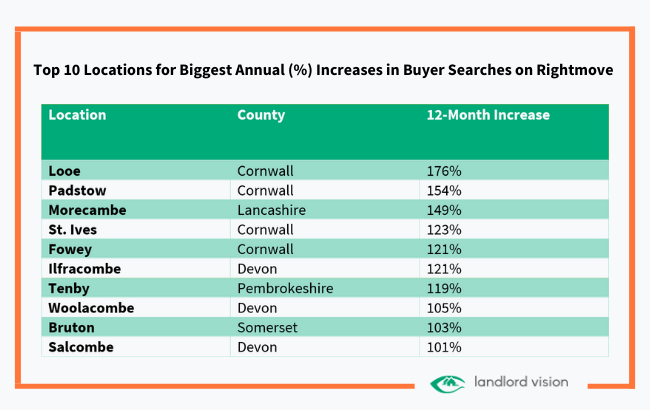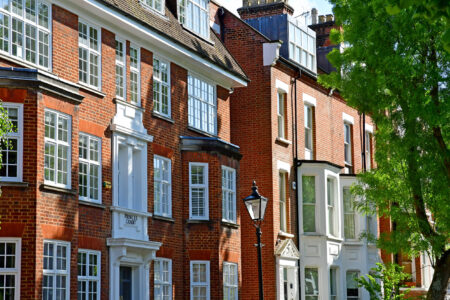
The coronavirus pandemic has led to an unprecedented demand for holiday lets. As Europe and the rest of the world continue to battle against rising cases, many would-be holiday goers are looking closer to home for their annual get away. At the top of the list for UK staycations sit coastal towns and villages.
Coastal locations in Cornwall and Devon have seen the number of interested buyers more than double over the past year as cash-rich homeowners search for second homes. Where there is the opportunity for price growth, there will inevitably be property investors seeking to capitalise on this. Specialist lender Hodge Bank reported a 30% jump in the number of holiday let mortgage applications for the six months running up to March 2021.
Which Areas Have Seen the Most Interest in Holiday Lets?
The South-West is the most popular holiday let location, with Hodge Bank reporting that 39% of mortgage applications were for properties in this region. Wales is the next most popular region, accounting for 19% of applications.
Cornwall’s outstanding natural beauty and over 400 beaches have helped the county come out on top. House prices in the region increased by 12.3% in the 12 months before February 2021 and locations such as Looe and Padstow have seen the number of interested buyers on Rightmove increase 176% and 154% respectively. The county as a whole replaces London as the most searched for place for home-movers.
This is not to say that the South East is the only location worth considering for holiday let investors. Morecambe saw a 71% increase in searches in January, as viewers of the television show The Bay discovered a newfound interest for the Lancashire town. Equally, areas such as the Lakes and North Yorkshire Moors retain a timeless appeal for walking holidays and countryside enthusiasts.

Top 10 Locations for Biggest Annual (%) Increases in Buyer Searches on Rightmove

The Investment Case for Holiday Lets
Holiday lets themselves afford investors a number of advantages over traditional buy-to-let investments. Research from property fund Second Estates suggests that the average net yield on a holiday let is 6.1%, compared to 5.0% on a traditional buy-to-let. However, the downside to this is that such investments require a more hands on approach.
An additional benefit of holiday lets is that HM Revenue & Customs categorises holiday homes as businesses, meaning they are exempt from the mortgage tax-relief changes which were introduced in 2017. What is more, such lets are entitled to capital allowances on furniture, equipment and fittings. A more detailed breakdown of the tax advantages and requirements of holiday lets can be found here.(Free PDF Download).
Finally, for some, holiday lets offer the intrinsic benefit of having their own holiday home. A place which both they and their family can enjoy whilst also generating a profitable return.
Disclaimer: This ‘Landlord Vision’ blog post is produced for general guidance only, and professional advice should be sought before any decision is made. Nothing in this post should be construed as the giving of advice. Individual circumstances can vary and therefore no responsibility can be accepted by the contributors or the publisher, Landlord Vision Ltd, for any action notaken, or any decision made to refrain from action, by any readers of this post. All rights reserved. No part of this post may be reproduced or transmitted in any form or by any means. To the fullest extent permitted by law, the contributors and Landlord Vision do not accept liability for any direct, indirect, special, consequential or other losses or damages of whatsoever kind arising from using this post.



